Table of Contents
It’s time for the Supreme Court to reexamine qualified immunity on campus
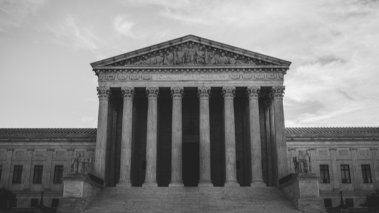
Rena Schild / Shutterstock.com
A recent partial win for student First Amendment rights in the U.S. Court of Appeals for the Eighth Circuit illustrates why the Supreme Court needs to clarify the doctrine of qualified immunity. A similar case currently being appealed to the Supreme Court brings new hope that this clarification may soon be forthcoming.
The Supreme Court has been very clear that college students enjoy the full force of First Amendment protections on public college campuses. But since 1982, when it invented the doctrine of qualified immunity — instituting a default rule of immunity for government officials — students’ ability to vindicate those rights has diminished. As it is now frequently applied by courts, qualified immunity has been abused in a manner that has enabled college administrators to violate students’ rights without consequence.
FIRE has been sounding the alarm on this problem for more than a decade. As our Vice President of Policy Reform Azhar Majeed wrote back in 2010, qualified immunity for campus administrators threatens to insulate them from the consequences of infringing students’ First Amendment rights in an arena where students should have the most robust possible protections:
The courts have time and again recognized that the university campus “is peculiarly the ‘marketplace of ideas,’” that it plays a unique and critical role in society as a place where students enjoy robust speech rights and are free to discuss and debate a wide range of viewpoints in an endless search for truth and knowledge. Upholding the freedom of speech on campus has been viewed as essential to the ability of the American university to contribute to the betterment and progress of society.
Yet, Azhar observed, “our nation’s institutions of higher education, either in ignorance or defiance of the law, frequently violate the free speech rights of their students.” Broader judicial recognition that campus administrators are on sufficient notice that students and faculty enjoy robust free speech rights and academic freedom could solve that problem.
“Faced with the prospect of paying damages out of their own pockets,” Azhar wrote, “administrators would logically have to reexamine their policies and practices and would be more likely to respect students’ speech rights.”
Now more than ever, clarity on this legal doctrine is needed from the Supreme Court to establish, once and for all, that administrators will be held liable for violating students’ long-established First Amendment rights.
Current issues surrounding the (mis)application of qualified immunity
In the 1982 case of Harlow v. Fitzgerald, the Supreme Court established that qualified immunity shields government officials “from liability for civil damages insofar as their conduct does not violate clearly established statutory or constitutional rights of which a reasonable person would have known.”
In the campus context, if a student seeks to hold an administrator personally liable for violating their legal rights — say, for example, if that administrator told the student he or she could not speak in a campus common area — the student must show that his or her right to speak was already “clearly established.”
While the law is very clear on an issue like student First Amendment rights, to show it is “clearly established” for the purposes of qualified immunity is anything but.
The Supreme Court’s conflicting rulings on the issue are largely to blame.
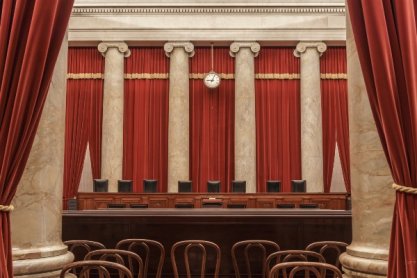
In the 2001 case of Saucier v. Katz, the Court first adopted a two-part test for qualified immunity. First, courts should consider whether the facts as alleged demonstrate a violation of a constitutional or statutory right; and second, whether that right was clearly established at the time, such that it would have been clear to a reasonable official that the alleged conduct was unlawful under the circumstances. This analysis, the Court held, is fact-specific and must be “undertaken in light of the case’s specific context, not as a broad general proposition.” Directing a court to similar cases on point helps bolster a plaintiff’s ability to overcome the official’s defense of qualified immunity.
The following year, in the 2002 case of Hope v. Pelzer, the Court clarified that that there need not necessarily be a prior decision exactly on point for a right to be clearly established. Then, in 2011’s Ashcroft v. al-Kidd (a case about detaining terrorism suspects), the Court granted qualified immunity to officials because it found no sufficiently similar case on point, but took pains not to overrule the Hope case, writing, “We do not require a case directly on point, but existing precedent must have placed the statutory or constitutional question beyond debate.”
Following these rulings, courts have grappled with how specific the judicial precedent needs to be to sufficiently put government officials on notice of their responsibilities.
Setting aside the question of whether qualified immunity is even appropriate in cases challenging university policies on expressive rights, FIRE believes the standard the court articulated in Hope is the right one: that the law is “clearly established” when the state of the law provides “fair notice” that the conduct was unconstitutional. Fair notice properly includes “a general constitutional rule already identified in the decisional law [that] may apply with obvious clarity to the specific conduct in question.”
Until courts consistently recognize that the nearly 50 years of Supreme Court precedent applying the First Amendment in full force on colleges has already placed campus administrators on sufficient notice to overcome qualified immunity in most cases, students will continue to be denied justice for violations of rights the Supreme Court acknowledges, in every other instance, that they ought to have. Reaffirming the “fair notice” standard would serve as an important tool to provide justice for those students.
Business Leaders in Christ v. The University of Iowa
Last week, the Eighth Circuit ruled — applying the “fair notice” standard — that administrators at the University of Iowa who violated a student group’s rights should have known better and may now be held personally liable for violating the group’s rights to free speech and association.
The district court that first heard the case held that the university violated the expressive, religious and associational rights of student members of the group Business Leaders in Christ (BLinC). In 2016, the university revoked the group's recognition amid a controversy over how it chose its members. BLinC sued. As we wrote in 2017:
The lawsuit alleges that last year, a gay member of BLinC was denied a leadership position in the organization due to his express “reject[ion] [of] BLinC’s religious beliefs and [statement that] he would not follow them.” The member filed a complaint with the university, contending that BLinC denied his request to pursue a leadership position in the organization because of his sexual orientation. The university subsequently launched an investigation into BLinC’s handling of the incident and ultimately revoked its status as an officially recognized student organization. The university demanded that BLinC “amend its Statement of Faith and submit an ‘acceptable plan’ for selecting its leaders,” or remain unrecognized. As an unrecognized student organization, BLinC is unable to reserve university facilities, receive funding, or utilize other benefits provided by the university.
The district court sided predominantly with the students. However, that court also found that qualified immunity protected the named administrators in the case from having to personally pay money damages because the law at issue — surrounding the group’s freedom of expression, association, and religion — was not “clearly established.”
University of Iowa administrators paying the remotest amount of attention to their obligations should have known that what they were doing was against the law.
BLinC appealed the decision to the Eighth Circuit to determine whether the district court erred in that finding.
(Notably, absent this kind of personal liability, students often cannot maintain a legal case at all because of states’ immunity to suit under the Eleventh Amendment and the likelihood of students’ impending graduation mooting claims for prospective injunctive relief.)
In an opinion written by Chief Judge Lavenski R. Smith, a panel of the Eighth Circuit found that it had. To reach this conclusion, the panel applied the fair notice standard to the free speech and expressive association claims, holding that the law was clearly established on those issues and qualified immunity should not have attached.
In his holding, Judge Smith applied the Hope standard as “the clearly established inquiry,” holding that law is clearly established when administrators have “fair notice” of it.
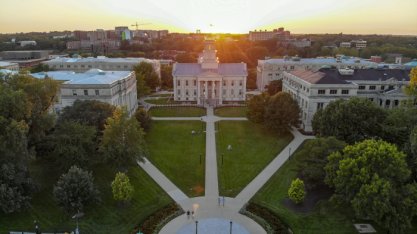
“The clearly established inquiry focuses ‘on whether the offic[ial] had fair notice that her conduct was unlawful’,” Judge Smith wrote. Moreover, “the reasonableness of the official’s actions ‘is judged against the backdrop of the law at the time of the conduct.’”
Subsequently, the Eighth Circuit cited a multitude of sufficiently similar free-expression and expressive-association cases — including Supreme Court and Eighth Circuit precedent, as well as “‘a robust consensus of cases of persuasive authority’ that ‘squarely govern[ed] [the individual defendants’] conduct in the specific circumstances at issue’” — as evidence the law was indeed clearly established.
In other words, University of Iowa administrators paying the remotest amount of attention to their obligations should have known that what they were doing was against the law.
In a concurring opinion, Judge Jonathan A. Kobes weighed in with his opinion that the majority should have also denied qualified immunity on the free exercise claim because “the law is clearly established on [the students’] free exercise claim, too.” Kobes had even stronger language to describe the unlawful actions of the Iowa administrators, suggesting they had not acted in good-faith.
Public universities routinely infringe the First Amendment rights of their students, regularly exacting real harm in their individual lives and weakening the broader climate for expression at our nation’s colleges and universities.
“The purpose of qualified immunity is to shield good-faith actors who make mistaken judgments about unresolved issues of law, and it protects ‘all but the plainly incompetent or those who knowingly violate the law,’” Judge Kobes wrote. “[W]e do not need the benefit of hindsight to know that the individual defendants’ choices were prohibited by the Constitution. They had more than ‘fair warning’ that their conduct was unconstitutional.”
“The law is clear: state organizations may not target religious groups for differential treatment or withhold an otherwise available benefit solely because they are religious. That is what happened here,” Kobes wrote. “The individual defendants may pick their poison: they are either plainly incompetent or they knowingly violated the Constitution. Either way, they should not get qualified immunity.”
‘Fair notice’ can curtail abusive application of qualified immunity
With the Eighth Circuit now applying the Supreme Court’s “fair notice” standard from Hope, the high court should once again revisit the issue to further clarify persisting confusion about the proper standard. Last month, FIRE asked the Court to do just that, filing an amicus curiae brief in support of Arkansas State University student Ashlyn Hoggard’s petition for certiorari.
Like the BLinC students, Hoggard’s quest for justice hangs on whether the Supreme Court finds that qualified immunity shields administrators from personal liability for stopping her from tabling for her unregistered student group on campus, citing an unwritten policy. Notably, it was the Eighth Circuit that heard Hoggard’s case on appeal last year, and found that qualified immunity did attach. But instead of the “fair notice” standard applied in the BLinC case, the panel hearing Hoggard’s case required a case directly on point — arguing that the administrators should get qualified immunity because, despite a broad body of national law on the issue, the Eighth Circuit itself had no precedential case holding specifically that a student like Hoggard could speak without prior restraint.
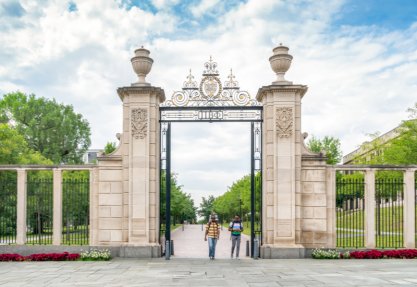
In our Hoggard brief for the Supreme Court, we present the substantial body of evidence that Hoggard’s rights at the time were clear, arguing that the law on unconstitutional speech codes is both plentiful and plain:
[C]ourts have consistently struck down restrictions on campus speech on First Amendment grounds. For example, numerous courts have invalidated so-called “free speech zones,” such as the one enforced at the time of the events at issue, as incompatible with students’ expressive rights. Courts have also routinely declared university speech policies unconstitutionally vague or overbroad. This “state of the law” gives public-university officials “fair warning” that their policies restricting campus speech violate the First Amendment. See Hope v. Pelzer, 536 U.S. 730, 741 (2002).
In light of this well-established precedent, this Court should clarify that the doctrine of qualified immunity offers no refuge to public-university officials enforcing policies that violate students’ First Amendment rights, when substantially similar policies have been invalidated by courts. As this Court has observed, qualified immunity does not protect officials who are aware of but ignore well-established principles until applied to them. See Taylor v. Riojas, 141 S.Ct. 52, 53–54 (2020) (per curiam) (“‘[A] general constitutional rule already identified in the decisional law may apply with obvious clarity to the specific conduct in question.’” (quoting Hope, 536 U.S. at 741)).
The undeniable fact is that the Supreme Court’s very strong stance on campus First Amendment rights has often failed to translate into lower court action because of how some courts have misapplied the qualified immunity doctrine to systematically protect administrators who repeatedly violate those rights.
These violations are neither an abstract nor a sporadic problem. Our two decades of experience at FIRE shows that public universities routinely infringe the First Amendment rights of their students, regularly exacting real harm in their individual lives and weakening the broader climate for expression at our nation’s colleges and universities. In the 1972 landmark case of Healy v. James, the Supreme Court quoted its own precedent when it held that such a weakening is unacceptable.
“[T]he vigilant protection of constitutional freedoms is nowhere more vital than in the community of American schools,’” the Court held.
If this is true, then qualified immunity’s current application certainly undermines that effort.
The Supreme Court should take the Hoggard case to clarify that civil rights on campus remain of paramount importance. If qualified immunity is to exist for college administrators that violate those rights, it must be the rare exception, not the rule.
Recent Articles
FIRE’s award-winning Newsdesk covers the free speech news you need to stay informed.
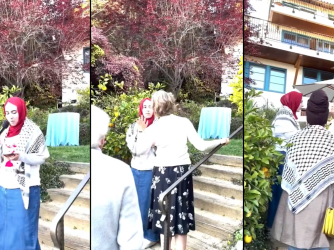
No, the Berkeley Law student didn’t have a First Amendment right to interrupt the dean’s backyard party
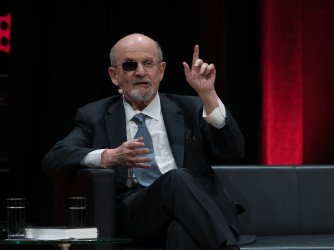
Salman Rushdie calls out left-wing censorship in CBS interview
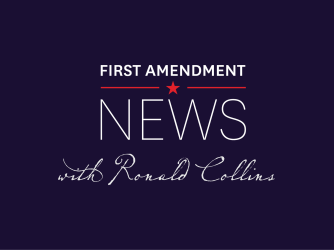
Falsely claiming a First Amendment right at a dinner party at private home — FAN 419.1
